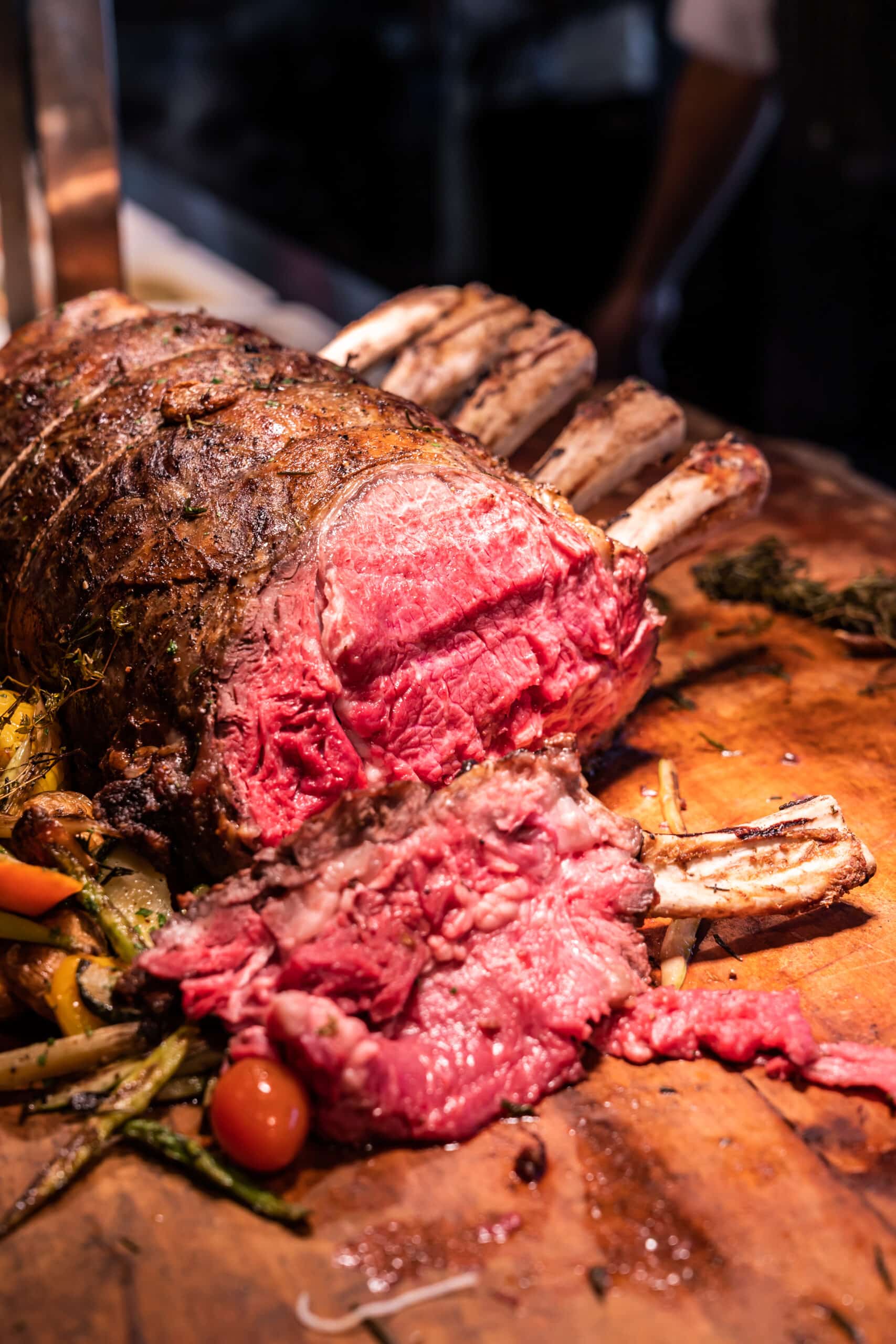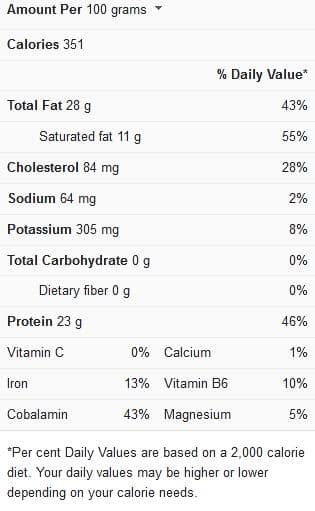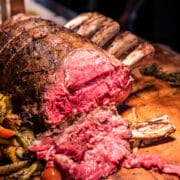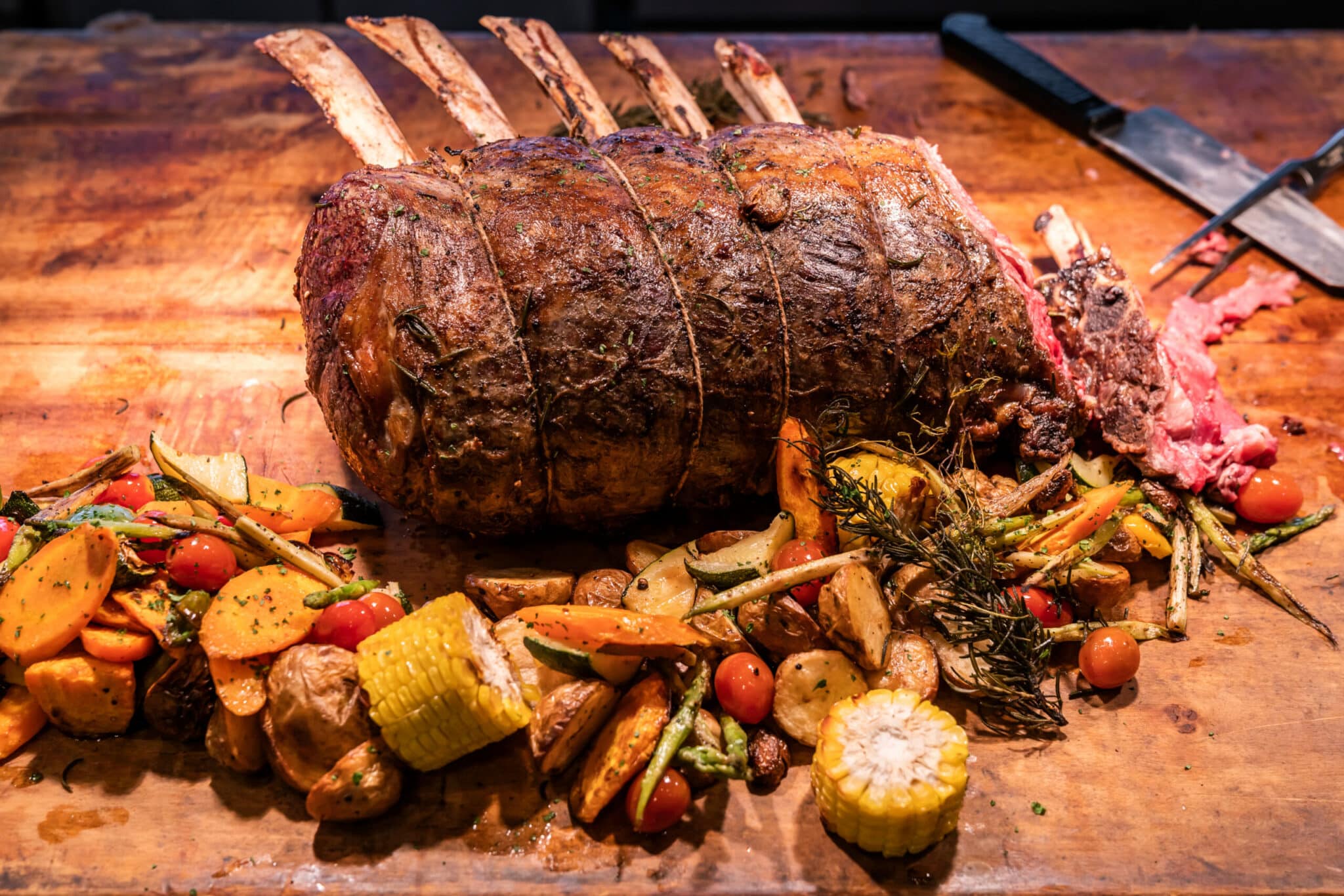The crowning jewel of any dinner will have to feature a Prime Rib Roast, never underestimate the power of a well-roasted piece of meat.
Serving your company with slices of expertly roasted prime rib is a show-stopper. However, when you’re in charge of the kitchen, this might be a little daunting. You don’t want to waste this cut of beef because it isn’t cheap.
Moreover, you can cook the prime rib in a way that infuses flavor into this exquisite cut before finishing with a sear for that beautiful outside crust that will have folks vying for the last piece.
You have to note that it is important not to hasten the procedure. To ensure that the dish is served on schedule, allow at least 5 hours the day of your gathering.

Rib nutrition facts

Tips to cook prime rib at 225 degrees
- Prime rib is simply the beef sliced from the rib portion, specifically ribs 6 to 10. It is also known as “standing rib roast when presented on the bone.” The origins of ribeye steaks can be traced back to this region. It’s juicy, well-marbled, and very delectable.
- You can buy boneless prime rib, but I recommend roasting it on the bone for the finest flavor, juiciness, and texture.
- You can budget 1 pound per person for a bone-in rib roast. Meanwhile, calculate ¾ pounds per person for a boneless roast. Yes, this amount of beef should suffice!
- If you are lucky, you’ll have enough leftovers to create French dip sandwiches or other meals.
- Bones don’t contribute flavor, but they help regulate temperature, which means you’ll get more tender, medium-rare meat in the finished roast. And, of course, when you’re done, you get to nibble on those bones.
- Season it well. Though there is no need to add much more than a decent heavy dusting of salt and pepper to prime rib because it has plenty of flavor on its own.
- You can also season it ahead of time. If you have the time, season the prime rib with salt at least a day ahead of time and up to four days ahead of time, allowing it to lay on a rack in your refrigerator uncovered. This will give the saline more time to infiltrate and season the surface while drying it off, resulting in greater browning during roasting.
- Allow the roast to air-dry on a rack in the refrigerator overnight before roasting to improve the crust. Seasoning the meat with salt up to a day ahead of time can help the seasoning sink deeper into the meat.
- Slow roasting allows the prime rib to cook more uniformly, resulting in soft, juicy pink flesh from end to end. Because the outside of the roast cooks faster than the inside, the outer layers of the rib roast develop a thick “grey ring” of overcooked flesh. Many recipes call for browning the prime rib in a hot oven before lowering the temperature. The issue with that method is that it leads to uneven cooking.
View this post on Instagram
How to Cook Prime Rib at 225 Degrees
This recipe is suitable for prime rib roasts ranging in size from two to six ribs. One pound of bone-in roast per guest is a good estimate. (Each rib adds around 1.5 to 2 pounds to the roast.) Use a dry-aged prime-grade or grass-fed roast for the finest results.
- Start by trimming your prime ribs to your preference.
- Then proceed to salt the roast generously.
- Make sure you insert a thermometer probe near the edge of the roast, set the low-temp alarm to 30°F (-1°C), and then the roast in the freezer.
- Proceed to preheat the oven to 225°F (107°C) in the meantime.
- Remove your roast from the freezer when the low-temperature alert goes off.
- Over high heat, heat a heavy skillet – cast iron might just be the ideal choice to make.
- In a skillet, sear the roast on all sides.
- Then proceed to season to taste with pepper and/or additional ingredients.
- Place the roast on a rimmed baking sheet on a rack. Set the high-temperature alarm for 125°F (52°C) and insert a probe into the very center.
- Proceed to cook the roast until the high-temperature alarm goes off in the oven. Make sure there are no lower temperatures in the meat.
- Remove the meat from the oven and cover it with foil to rest for 30 minutes.
- After that, carve the meat and serve
The roast
To take out of the oven (Temperature)
Rare
115 degrees
Medium rare
120 degrees
Medium
125 degrees
Medium well
130 degrees
Well done
140 degrees
Print
Slow roasted prime rib
Ingredients
- Prime Rib Roast – with the bones cut off and tied back on
- ½ cup of horseradish mustard
- Two tablespoons of Worcestershire sauce
- Four cloves of garlic, minced
- Coarse ground salt
- Black pepper
Instructions
- Preheat the grill to 225°F.
- Prepare your roast while the grill is heating up.
- You can now proceed to trim any excess fat from the top of the roast to a thickness of 1/4 inch.
- Then combine the mustard, Worcestershire sauce, and garlic in a small bowl.
- Proceed to slather the mustard mixture over the roast and season well with salt and pepper.
- Put the roast on the grill. Make sure you close the lid on the grill after that.
- Smoke until the roast achieves an internal temperature of 120 degrees F for Rare or 130 degrees F for Medium.
- Then allow 35 minutes per pound of prime rib for a rare, bone-in roast.
- Transfer the roast to a cutting board, cover with foil, and set aside for 20 minutes to rest.
- Raise the temperature of your grill to 400 degrees F while the roast is resting.
- Return the roast to the grill once it has reached the required internal temperature and sear it until it has reached the desired internal temperature.
- Roast at 130°F for rare, 135°F for medium-rare, and 140°F for medium. Keep an eye on your temperature during this procedure because it should go swiftly.
- Before slicing and serving, transfer the roast to a cutting board and let it rest for at least 15 minutes.
You can watch this video recipe to know more about cooking prime rib at 225 degrees.
